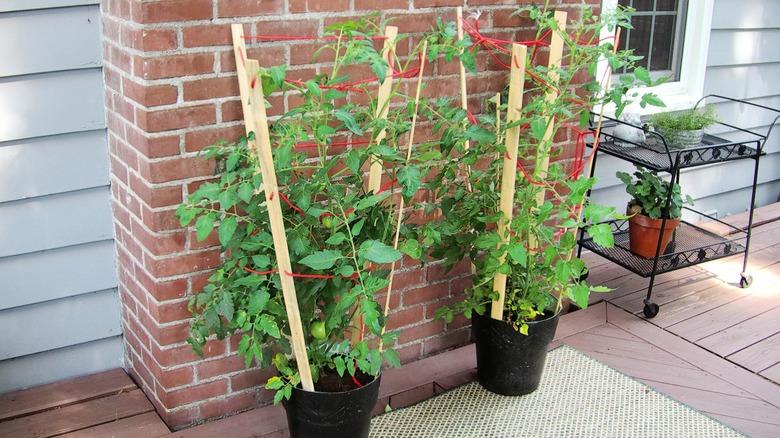This DIY Tomato Cage Is Budget-Friendly, Easy, And Better For Your Plants
We may receive a commission on purchases made from links.
I am a master woodworker, not a master gardener, as has been proven many times over the years. When it comes to gardening, I prefer to grow things I can eat, as opposed to flowers and decorative plants. The homegrown vegetables I love best are tomatoes. So, this summer I planted two tomato plants in pots (along with some companion basil plants to help them flourish).
One of the two tomato plants promptly died along with the basil. (See master gardener comment above). Undeterred, I replanted a second attempt. To say that I was cynical about my success would be spot on. Still, I applied a natural fertilizer, watered, and tended to them daily. Surprisingly, they started growing like crazy. I would need tomato cages for them after all. A quick trip to the hardware store proved that they had none. Apparently, I had missed the tomato cage season ... who knew? Once again undeterred, I decided to construct a couple DIY tomato cages. These unconventional "cages" turned out rather well in my opinion.
They have several advantages over the ubiquitous metal plant frames. First, they can be installed around an existing plant without damaging it. Second, the nylon cord that supports the vine and branches is much softer than metal and won't harm the plants. Third, you can add an additional bit of support for a branch grown wayward or one with a surplus of fruit. Lastly, they are super cheap to make.
How to make the lace-up cages
You'll need two things to build these tomato cages — some wood for your stakes (unfinished lattice molding is perfect for this) and some nylon cord, like this Nylon Poly Rope from PerkHomy. Cut the stakes to about 46-inches long, four per cage. I made my own stakes by ripping them from the edge of a 2 x 4, but as long as yours are about ¼-inch thick and 1½-inches wide, they will work perfectly. Stack four stakes on top of each other and drill two, ⅜-inch diameter holes (through all four stakes at once) about 1½-inches apart, diagonally offset from each other. See the photo above. Drill three sets of these holes about 12 inches apart down the length of the stakes. Now grab your nylon cord and get out to your plants.
Installing the stakes in pots makes this task easier, but it works out in the garden, no problem. Being careful to keep the stakes away from the plant's roots, push them into the ground at a slight angle, making the cage wider at the top than the bottom. Place them equidistance around the plant. Starting with the top set of holes, lace a length through the holes you drilled in the stake. The cord should be loose, leaving about 18-inches of space between opposing stakes. Tie it off. Then do the same on the bottom set of holes, followed by the middle set.
If you are installing your cage around tall plants as I did, strategically thread the cord under branches that need support. And if one branch has gone rogue, tie on an extra length of cord to specifically support it. Finally, wait for your delicious tomatoes to grow!

